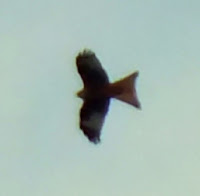The Immature Iceland Gulls in Hampshire, Jan-March 2012
 |
| Iceland Gull, Broadmarsh, Hampshire - March 2012 |
Firstly I am basing a lot on little experience,
and features which may not be concrete, bear in mind I do most of my birding in
Hampshire and I Hants ticked Iceland Gull this year, so I have not seen many. I
also admit to not fully understanding how and when these birds moult, but I now
believe the Broadmarsh bird could well be a 1st winter bird and that
the Camber dock bird is certainly a 2nd winter. Anyone following
this may realise that they were both aged as such publically after there
initial discovery and in both cases I challenged that opinion! What a numpty!
Anyway over the course of my journey all round the houses and back I have
learned a lot and I hope you have too.
The Camber Dock Iceland Gull
Photographed on the 30th January 2012
If you except that the Camber bird has a darker iris
than is typical then everything
else fits 2w. The books suggest that the iris colour is a good
feature to use to age birds in their first two year but that it can be
variable. In general we are lead to believe that the iris of a 1w should be
dark and in a 2w it should be pale.
The above photo has been deliberately darkened
to enhance and clearly show the presence of grey feathers in the mantle and
scapulars of this bird. The argument falls apart If a 1w Iceland Gull can appear
this advanced but surly it can’t. So coupled with this and a clearly
bi-coloured iris, the pale greenish ivory (not pink) coloured base to the bill
with a dark band and a pale tip, the white head, breast and primaries and
otherwise very pale appearance it has to be a 2w.


The Broadmarsh Iceland Gull
Photographed on the 5th , 12th and 14th March 2012
This bird superficially looks very similar to
the Camber bird and could be thought to be in 2w plumage. Add to that its dark
eye (a feature apparently unusual for a 2w) and it is unsurprising that I and
others initially suspected it to be the same individual as the Camber Dock bird.
On inspection of photographs it became clear that this was not the case.
In strong sunlight the iris of the Broadmarsh bird can look yellowish, but in general it appears dark as in this photo.
The bill base is pink (not greenish ivory) with
an all dark band and tip. The head and breast are white but particularly in
flight the wings, tail and upper body have a brownish milky tea colouring.
 There is no sign of any new grey feathers in the mantle and scapulars.
There is no sign of any new grey feathers in the mantle and scapulars.
It is not a typical biscuit coloured juvenile but I believe
this bird has a dark eye because it is a faded, worn juvenile (or 1st
winter).
If you have got this far then you must be at least vaguely interested in these
birds and their age.
What do you think?
Thanks must go to Alan Lewis, Andy Johnson and particularly to Jason Crook for
helping me to get my head around these gulls…
Cheers




















































